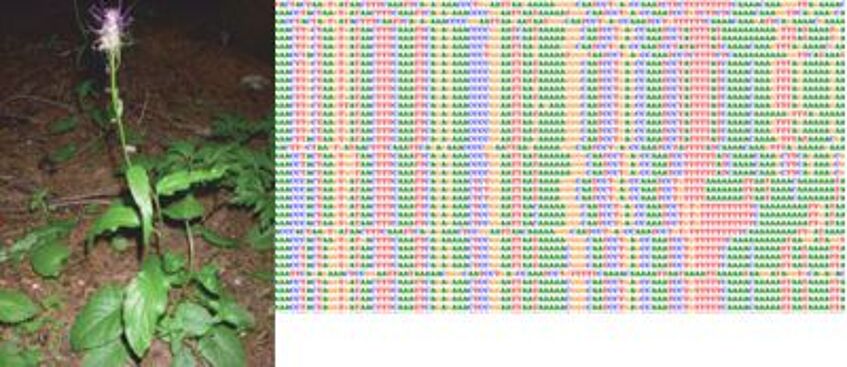SS 2024: Drivers of plant and fungal diversity: from genomes to biomes
Unusually large amounts of an unusual flavone in exudates: What drives Primula auricula towards excessive flavone production?
A characteristic feature of many Primula species is an either mealy excretion, referred to as farina, or an oily excretion, produced by glandular trichomes. Farina is a conspicuous feature of Primula and some ferns. In Primula, it often contains unproportionally large amounts of unsubstituted flavone, indicative of a functional role for the plant. Using P. auricula as a model plant, the influence of abiotic factors on both farina and flavone production has been established in our group. Now we want to expand our research towards biotic interactions, for a better understanding of flavone accumulation in an ecological context. Selected bioassays (e.g. herbivore, fungi) and tests for allelopathic function will be carried out mainly under lab conditions.
Flavonoids are biosynthesized from aromatic amino acids to give rise to a large number of flavonoids. Abiotic stress appeared to be one driver for increased flavone in exudates of Primula auricula. However, we do not know about the biosynthetic background, especially if upregulation of the precursor amino acids takes place concomitantly with increased flavone levels. Standard chromatographic techniques such as HPLC are applied for comparison of aromatic amino acids versus flavone accumulation, for a better understanding of metabolic processes and their dynamics.
Supervisors: Johann Schinnerl & Karin Vetschera

Not so fast… Exploring pollen dosing (controlled pollen release) in buzz-pollinated Melastomataceae
Buzz-pollinated flowers contain anthers that are exclusively pollinated through high frequency vibrations generated by visiting bees. Many buzz-pollinated species have converged on a single floral morphology, known as the Solanum-type flower, with fused or partially fused cone-shaped anthers. However, the family Melastomataceae is approximately 95% buzz-pollinated yet contains a staggering variety of different anther morphologies, providing a stellar opportunity to understand the evolution and diversification of flowers within this unique pollination niche. One proposed fitness strategy in buzz-pollinated flowers is called pollen dosing. This mechanism entails limiting the amount of pollen that can be removed by an individual pollinator to maximize the number of bees that a flower can place its pollen on. In turn, this can improve the effectiveness of an individual flower’s pollen dispersal, i.e. the number of conspecific stigmas that an individual flower is ultimately able to transfer its pollen to. It has been suggested that different anther types in buzz-pollinated flowers serve as functional traits that mediate pollen release based on pollinator interaction networks (for example, pollen dosing may vary based on the diversity of potential pollinators or the abundance of available pollinator). However, the role of pollen dosing in the closely related yet divergent Melastomataceae flowers is still largely unknown. This project will explore the connections between pollinator networks, floral structure, and pollen release. In this project, we will use Computed Tomography of Melastome species collected in Latin America to explore the structure of different anthers alongside pollinator monitoring data to analyze aspects of anther shape evolution, function, and diversification.
Supervisors: Benjamin Lazarus & Agnes Dellinger

Inorganic carbon uptake of selected desmids
Pulse-Amplitude Modulation (PAM) is a technique permitting chlorophyll fluorescence to be measured quickly and reliably in a non-invasive manner. This project will focus on inorganic carbon uptake of desmids inhabiting unique habitats with limited HCO3-availability.
Supervisor: Michael Schagerl

Palynology inside out
Are you interested in pollen? In collaboration we will find an appropriate project where you can investigate pollen morphology with light- and scanning electron microscopy and pollen ultrastructure using transmission electron microscopy. This would be followed by training in describing pollen and illustrating your results. Subjects might include particular extant plant genera, selected species, or fossil material. Students considering palynology for their MS thesis are especially welcome.
Supervisors: Fridgeir Grimsson & Silvia Ulrich

Is the distribution of the Austrian endemic Euphrasia sinuata (Orobanchaceae) underestimated?
Cryptic lineages can negatively affect our understanding of biodiversity even in well-explored regions such as Austria. One such group is the taxonomically intricate genus Euphrasia (Orobanchaceae). The small-flowered E. sinuata is known from two localities in the Austrian Alps of Tirol (Rofan, Kitzbühler Horn), but evidence from DNA sequence data suggests that the species may be more widespread, reaching Salzburg and Austria at least in the area of the Hohe Tauern. Using flow-cytometry (E. sinuata is diploid in contrast to the very common also small-flowered E. minima) and a DNA barcoding approach using ITS sequences (E. sinuata has ribotypes clearly distinct from E. minima) applied on material to be newly collected this summer additional occurrences of this regional endemic will be sought. This project cyn be readily extended into a Master's thesis.
Supervisors: Gerald M. Schneeweiss, Michael Barfuss & Hanna Schneeweiss
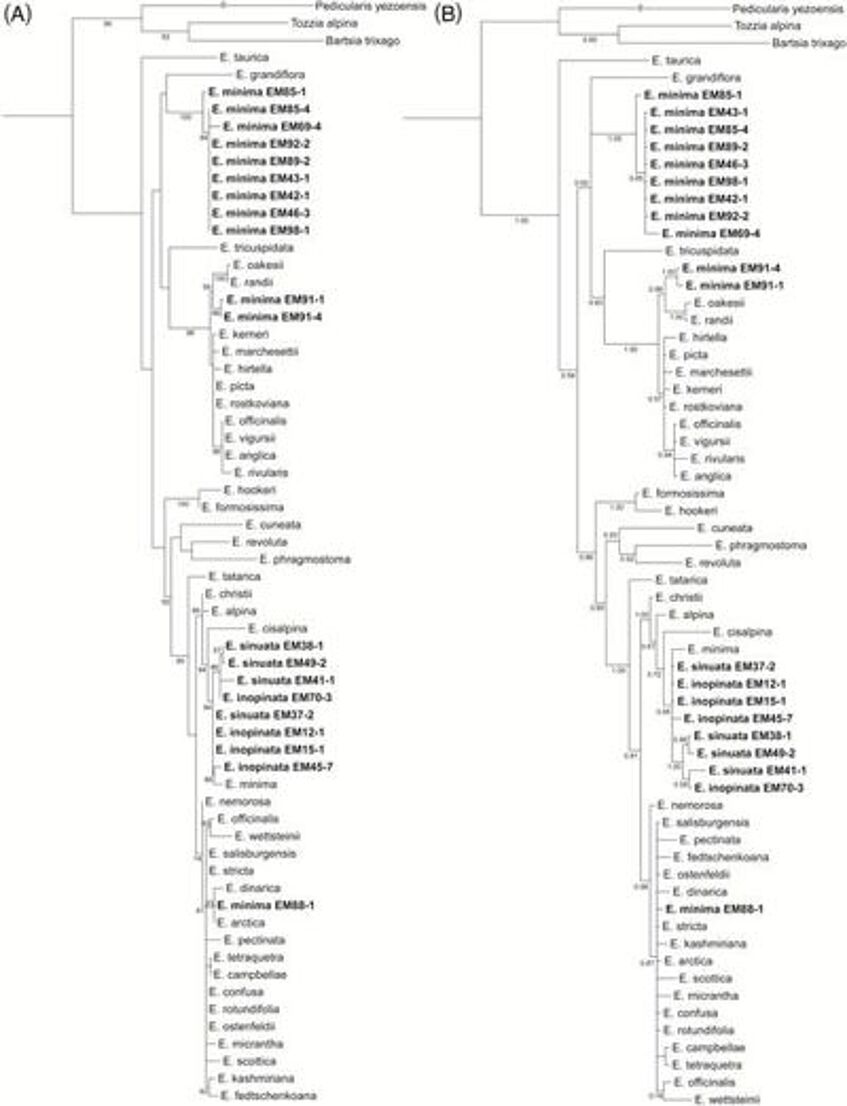
Environmental stress at the cellular level
This research project is focussed on osmotic stress of plant cells. In order to visualize the shape of cells with and without turgor, different specific dyes will be tested. The anatomy of leaves in seed plants (cross sections) or in mosses will be studied using microscopy, cell biological methods or microtome sections.
Supervisor: Ingeborg Lang
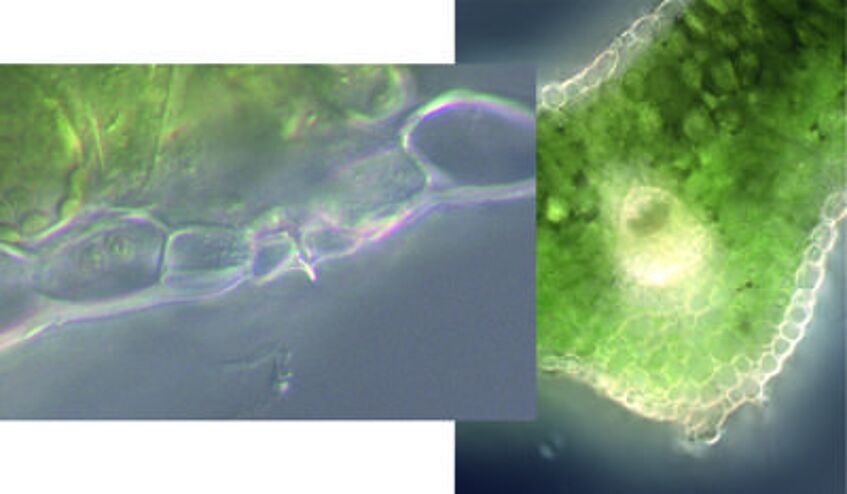
Genomic drivers of the adaptive radiation New Caledonian persimmons (Diospyros; Ebeneaceae)
This project is embedded within a large project that investigates a plant radiation on New Caledonia, a biodiversity hotspot. The complex geological history of the archipelago resulted in a wide variety of substrates, including heavy-metal rich soils, which together with sharp climatic and altitudinal gradients defines a wide range of ecological niches. A long distance dispersal event brought a lineage of Diospyros (persimmons or kaki) to New Caledonia roughly 1 million generations ago, where it radiated into more than 30 species, each adapted to different niches. Comprehensive analyses are ongoing around this adaptive radiation, including genomic, transcriptomic, physiological, ecological and morphometric investigations. The herein proposed projects may include for example genomic inferences of species delimitations, of historical changes in population size, of gene flow, of genome dynamics, of gene expression, ecological analyses or a combination of these, depending on the interest of the student. Up to two projects are available.
Supervisor: Ovidiu Paun
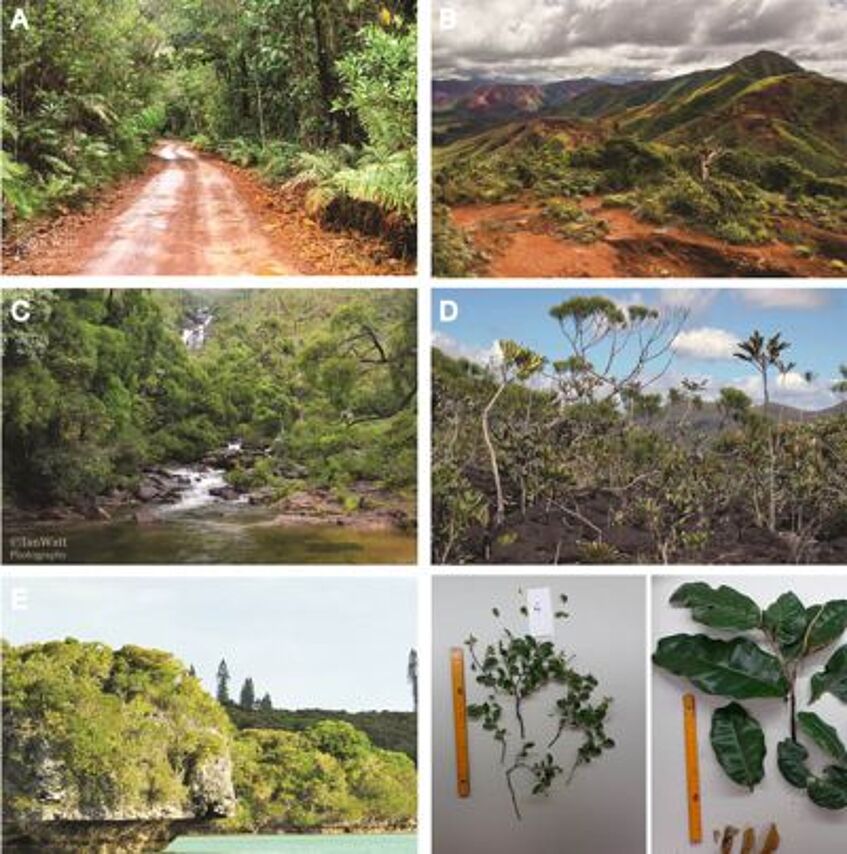
Toxic effects of ionic liquids on microalgae
Ionic liquids - salts with a melting point below 100° C - are often quoted as possible "green alternatives" for teh extraction of heavy metals from polluted environments. They can, however, be toxic for organisms. In this study, biotest with microalgae will be conducted to check the potential toxicity of newly designed ionic liquids.
Supervisor: Michael Schagerl

Evolution of repetitive DNA profiles after polyploidization in the genus Prospero
The Prospero autumnale complex (Asparagaceae subfam. Scilloideae) is well-known for its chromosomal diversity that is not accompanied by morphological diversification. Several diploid cytotypes differing in base chromosome numbers (x = 5, 6 and 7) and genome sizes are known to hybridize, forming homoploid diploid hybrids and allopolyploids. The current project aims at a comparative analysis of the changes in the repeatome accompanying polyploidization involving two diploid cytotypes, B6B6 and B7B7, using dedicated bioinformatic analyses via RepeatExplorer. The data will be interpreted in a phylogenetic context and will provide novel insights into changes on the genomic level that accompany polyploid genome restructuring.
Supervisor: Hanna Schneeweiss
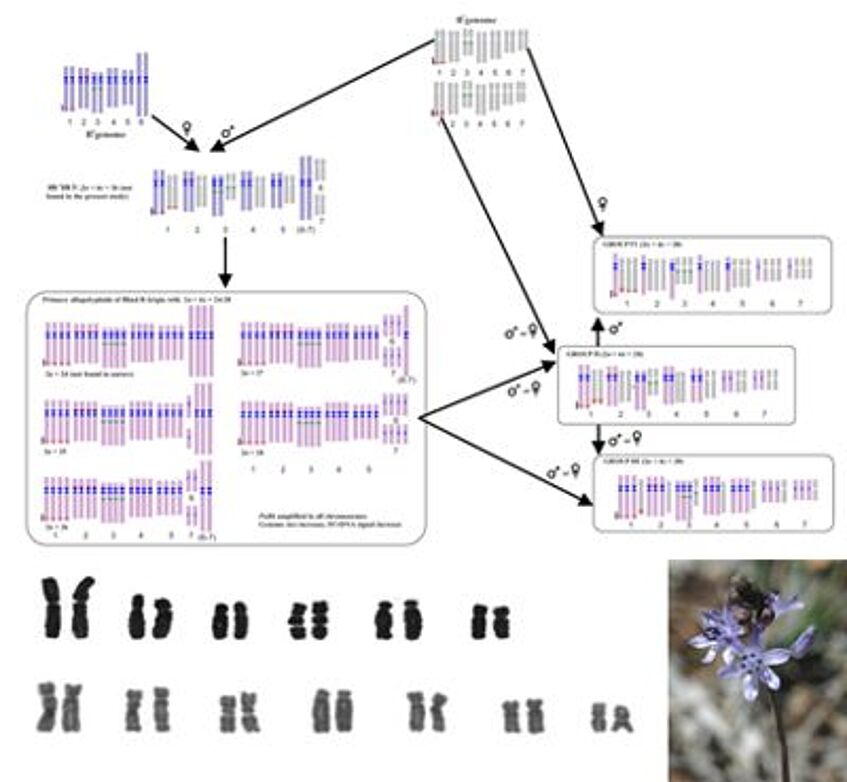
What about the genus Otidea in Austria?
In the course of this project ITS sequence data will be generated, thus contributing to the ABOL (Austrian Barcode of Life)-project. If necessary, other gene regions will be added resulting in a multigene analysis. Addressed questions inlclude: How many species of the genus Otidea are present in Austria? Are there cryptic entities? The source of material for study will be the fungarium of Vienna University. In addition to sequencing morphological studies using light and maybe also electron microscopy will be conducted.
Supervisors: Irmgard Greilhuber & Michael Barfuss

Assessing ancient range shifts from molecular data: historical biogeography of Phyteuma (Campanulaceae)
Plants responded to Pleistocene climate oscillations by range shifts, which may result in lineage diversification and speciation. In the absence of fossil evidence (lacking for the vast majority of herbaceous species), past range shifts have to be inferred from genetic data. During a previous student's project, it has been found that within Phyteuma spicatum (Campanulaceae), a species widespread in temperate Europe, a few populations from the central Alps and northern Apennines possess chloroplast haplotypes very different from those found in the other populations. These haplotypes could be remnants of a more widespread ancestor of the P. spicatum group suggested by the sister relationship of the geographically disjoint taxa P. pyrenaicum, restricted to the Iberian Peninsula, and P. vagneri, endemic to the Carpathians. To test this hypothesis, the existing data set of plastid sequences from P. spicatum will be extended by data from closely related species (P. gallicum, P. nigrum, P. pyranaicum, P. vagneri) obtained via Sanger DNA sequencing.
Supervisors: Michael Barfuss & Gerald M. Schneeweiss
